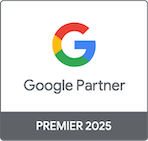Wasted ad impressions occur when ads are served to off-topic websites, to invisible placements, or to non-human traffic, with no interaction from real users.
40% of display budgets are lost to wasted ad impressions: Research insights and solutions for ad spend
Abisola Tanzako | Nov 04, 2025

Table of Contents
- The hidden cost of wasted ad impressions in display advertising
- Why bad placements are the leading cause of wasted ad impressions
- Key insights on wasted ad impressions
- The anatomy of bad placements: Types and triggers
- The cost of wasted ad impressions: Financial and brand impact
- Proven strategies to reduce wasted ad impressions and improve display ROI
- How ClickPatrol tackles wasted ad impressions head-on
- Reclaim your display budget from wasted ad impressions
The question that has long plagued marketers is how their ad budgets are wasted faster than they can keep up.
Recent industry research and audits confirm the suspicion: a large portion of display advertising budgets, often cited at 40% in industry discourse, does not result in actual, quantifiable exposure or impact, since impressions are not viewable, are low-quality or fraudulent, or appear on inappropriate websites.
This article will explore the causes of wasted ad impressions, demonstrate the quantifiable impact on campaign economics, explain why conventional metrics (impressions, raw reach, or viewability) obscure the issue, and show how ClickPatrol’s placement controls and exclusion logic keep budgets off bad sites.
The hidden cost of wasted ad impressions in display advertising
Up to 40% of budgets lost to wasted impressions is a critical problem that requires strategic action in display ads.
- Display advertising’s scale: According to a forecast released in November of 2024, US outlays were estimated to reach $309.3 billion in 2024, 15.1% higher than in 2023, highlighting its role in visual storytelling and reach.
- Wasted impressions crisis: As much as 40% of display budgets are wasted on ads sent to bots, invisible placements, or irrelevant sites, distorting ROI.
- Programmatic pitfalls: ANA estimates that programmatic ad waste will increase by 34% to $26.8 billion in 2025, up from $20 billion in mid-2023, as automated bidding prioritises quantity over quality.
- Global losses: According to Forrester Consulting, 12% of global advertising funds are wasted due to martech inefficiencies and ineffective placements.
- Breakdown of waste:
- 20-25% from invalid traffic.
- 46% in unviewable ads.
- 15% of made-for-advertising according to MFA sites and ANA.
- Real impact: A quarterly campaign costing $1 million would lose $400,000, which can pay for A/B testing or influencer partners.
- MFA sites’ toll: An analysis by Marketing Dive of $123 million spent on 35.5 billion impressions reveals that 15% of the programmatic budget is allocated to MFA sites that deliver low-value content, undermining trust.
Why bad placements are the leading cause of wasted ad impressions
Bad placements are responsible for the vast majority of wasted ad impressions, causing systemic issues such as ads appearing on pages with high ad loads, hiding creatives, or appearing on invalid sites full of clickbait and malware.
- MFA sites’ impact: Responsible for 15% of programmatic impressions in Q4 2022, down to 4% in mid-2024 after enforcement, still hundreds of billions wasted.
- No relevance to the audience: Use social shares and SEO to drive clicks; risk of brand dilution (e.g., a luxury ad shown next to scam content).
- AI-driven spam sites: Generative AI creates thousands of low-quality domains overnight, flooding auctions.
- Cheap CPM bait trap: $3–5 CPM buys lead to 21% of impressions on viewability-gaming MFAs.
- High ad load: 54% of display ads are made unviewable on cluttered pages.
- Video IVT: 26% of Android in-app video traffic is invalid, and over 20% in OTT traffic is as well through spoofed domains.
- Brand safety risk: 80% of video ads are viewed in unwanted, unsafe contexts.
- Attribution damage: Wasted impressions overcount reach and drain conversions; up to 25% of ad spend is lost through IVT in low-quality placements.
Key insights on wasted ad impressions
Critical research analyses reveal systematic causes for up to 40% of wasted ad impressions in display adverts.
- ANA programmatic transparency study (2023): Analyzed $123 million across 21 brands; spent 23% on low-quality websites from supply-chain “information asymmetry”.
- ANA insight: 15% of impressions are on clickbait sites, with no uplift due to a lack of downstream transparency.
- eMarketer 2024 ad waste report: 12% global budget wastage on account of tech mismatches; display suffers 28% underutilization by SMBs.
- H1 2024 forecast by eMarketer: Inventory growth fueled by AI could lead to a waste of 35% with no controls in place.
- Comscore viewability (2014–2024): US display in-view rate remains steady at 55%; programmatic is 2x more IVT-prone than direct purchases.
- WARC 2023 fraud report: $84 billion annual digital ad wastage across the globe; 25% due to bot IVT in low-quality placements.
- Marketing geo-analysis: 65% of location-targeted advertising spend is wasted on misdirected signals and non-relevant placements.
- Digiday 2023 OTT fraud: 20.4% of programmatic video traffic is invalid, highlighting cross-format threats.
The anatomy of bad placements: Types and triggers
Malicious placements undervalue ads in various forms, driven by systemic factors.
- MFA ecosystems: Template sites spew out SEO trash to tally impressions; ANA reports show 21% of impressions for only 15% of spend, starving upmarket publishers.
- High-ad-density pages: Pages with 10+ units per viewport drop below 50% viewability, leading to user bounce and non-visible ads.
- Geo-misplacements: Location Sciences found 29% of location-targeted ads were served off-target, with 65% of spend wasted on incorrect placements.
Key triggers:
- Programmatic bidding prioritizes cheap CPMs over context.
- Supply path transparency hides over-charging by resellers.
- AI bots amplify fraud; Pixalate finds 11% video fraud on 300×250 banners.
The cost of wasted ad impressions: Financial and brand impact
- Huge waste: 40% waste equals $123 billion in display spend globally; a $500K campaign wastes $200K, enough to cover creative testing or retargeting.
- Damage to brands: Ads on poor sites increase negative brand perception by 15–20%, according to Integral Ad Science via eMarketer.
- Manipulated ROAS: Inflated metrics distort ROAS, leading to inaccurate budget scaling and flawed strategic planning.
- Eroding consumer trust: WARC records a 10% rise in consumer distrust due to poor digital ad experiences.
- Regulatory and industry consequences: GARM’s 2024 closure (Ad Age) highlights breakdowns in self-regulation, heightening compliance risks.
- Opportunity cost: Misspent spend keeps investment from flowing into high-ROI media, such as first-party data activation or contextual targeting.
Proven strategies to reduce wasted ad impressions and improve display ROI
- Audit your tech stack: Begin with a full inventory audit and use verification tools early to turn off IVT pre-bid.
- Enforce publisher whitelists: Cap buys to top-quality, vetted sites and cap MFA exposure to near-zero.
- Shift KPIs: Replace raw impressions with viewable CPMs or attention-based metrics; 36% of execs now highlight attention to avoid waste.
- Use panel-validated targeting: Use Comscore-approved data panels to avoid geo-fraud and confirm precise audience delivery.
- Demand supply chain transparency: Include strict transparency provisions in insertion orders (IOs) to disclose hidden fees and placements.
- Embrace pre-bid contextual filters: Use AI-powered content analysis to place ads near appropriate, brand-safe contexts in real time.
- Use cross-channel frequency caps: Seamlessly manage across display, video, and social to prevent duplication and optimize budget efficiency.
How ClickPatrol tackles wasted ad impressions head-on
ClickPatrol is built to eliminate wastage in display advertising. By automatically blocking low-quality and irrelevant placements, we put your ads on trusted websites with verified human traffic and strong contextual relevance.
Clients save 25–30% of wasted impressions from day one.
How it works:
- Pre-bid AI filters analyze auctions in real time, blocking MFA signals, IVT risks, and high ad-load pages against Comscore-validated benchmarks.
- Actual results: A client saved $209 and had 8% cleaner traffic while optimizing spend toward quality inventory.
Reclaim your display budget from wasted ad impressions
The alarming rate of wasted ad impressions in display advertising demands that marketers act now.
With up to 40% of budgets lost due to non-viewable, low-quality, or fraudulent placements, it is time to take a proactive approach to protecting your ad spend.
Stop losing nearly half your budget to wasted ad impressions. ClickPatrol’s real-time protection automatically blocks low-quality placements, keeping your ads visible only on trusted, high-performing sites. Reclaim your spend and maximize ROI.
Frequently Asked Questions
-
What are wasted ad impressions?
-
How do poor placements contribute to ad waste?
Poor placements, like MFA pages or ad-heavy pages, deliver ads to low-value environments.
ANA reports 15% of programmatic ad spend was delivered to these sites from 2022-2023, puffing up impressions but drowning engagement.
-
How much of the advertising budget is wasted on poor placements?
Between 15% and 25% of adspend is lost to IVT due to poor placements, according to WARC, bringing the total to 40% when viewability and fraud are included.
-
How can I reduce wasted ad impressions on my campaigns?
Employ pre-bid exclusions, verification solutions, and quality-focused KPIs.
ClickPatrol platforms accomplish this automatically, blocking bad placements so ads reach only reputable sites.






